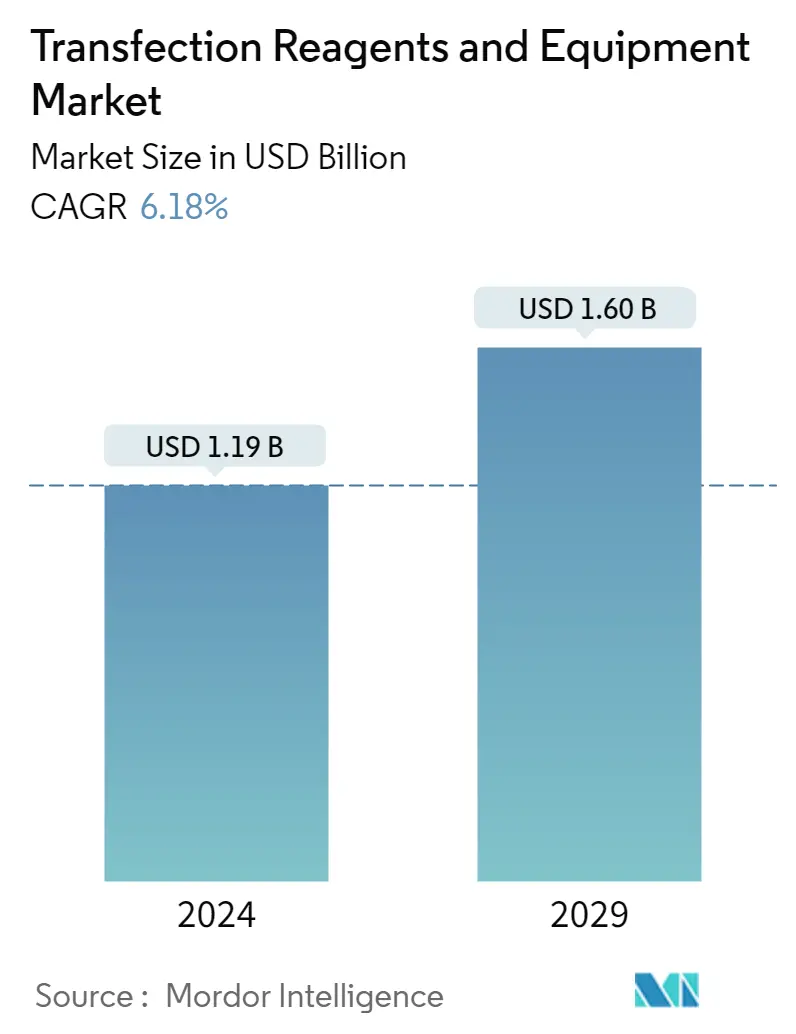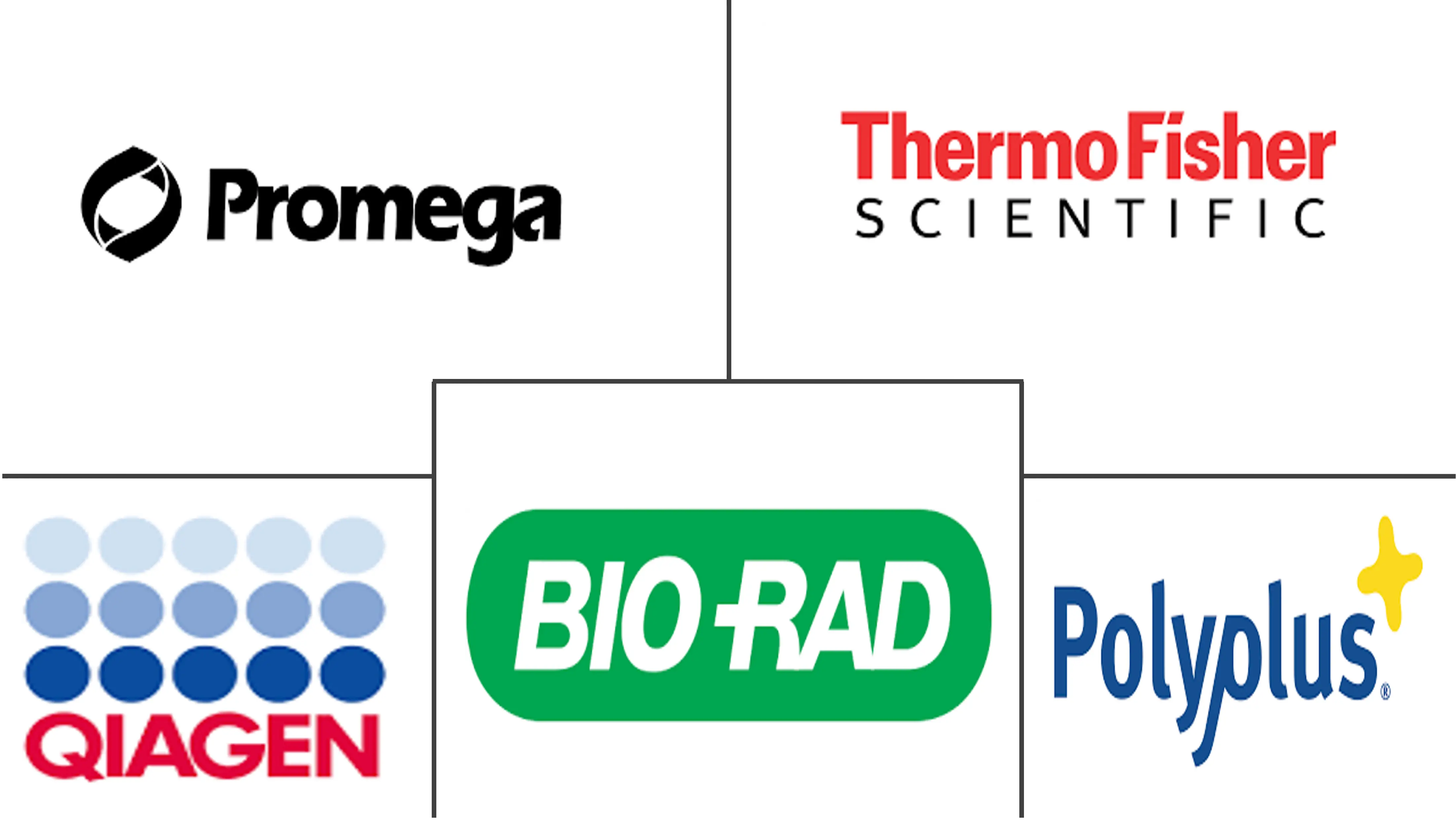Market Size of Transfection Reagents and Equipment Industry

| Study Period | 2019 - 2029 |
| Market Size (2024) | USD 1.19 Billion |
| Market Size (2029) | USD 1.60 Billion |
| CAGR (2024 - 2029) | 6.18 % |
| Fastest Growing Market | Asia-Pacific |
| Largest Market | North America |
Major Players
*Disclaimer: Major Players sorted in no particular order |
Need a report that reflects how COVID-19 has impacted this market and its growth?
Transfection Reagents and Equipment Market Analysis
The Transfection Reagents and Equipment Market size is estimated at USD 1.19 billion in 2024, and is expected to reach USD 1.60 billion by 2029, growing at a CAGR of 6.18% during the forecast period (2024-2029).
Many companies developing COVID-19 vaccines were using viral vectors to ensure effective vaccine delivery. However, the production of viral vectors was a cumbersome and challenging process, and any improvement to that process could result in more vaccines being made available faster. The viral vector-producing cells need to be transfected with multiple plasmids carrying various viral genes and the vaccine. For instance, according to an article published by PubMed in July 2022, a transfection procedure was used for the purification of the SARS-CoV-2 spike (S) protein ectodomain. As the research and development of COVID-19 vaccines gained pace during the initial pandemic, transfection reagents and equipment were increasingly used in the production and research of vaccines. Thus, the pandemic had a significant impact on the market growth, however as the pandemic has subsided currently, the studied market is expected to have stable growth during the forecast period of the study.
The major factors driving the market growth include technological advancements in transfection, increased R&D expenditure and activities by pharmaceutical and biotech companies, and a rise in demand for synthetic genes.
The introduction of transfection technologies has laid the foundation for the genetic dissection of several causative agents of several diseases. The technological advancements in transfection procedures is a major factor driving the market growth. For instance, according to an article published by PubMed Central in October 2022, it has been observed that recently, strategies to improve human mesenchymal stem cells (hMSCs) transfection have been developed by innovating nanocarriers, nucleic acid cargos, and by priming hMSCs chemically and physically for more efficient transfection. Thus, these types of technological advancements in transfection are expected to boost the market growth.
Moreover, the increasing R&D expenditure and research activities by pharmaceutical and biotech companies are also expected to boost market growth. For instance, according to the 2021 annual report of Pfizer Inc., the company invested USD 13,829 million in FY 2021 which increased heavily as compared to USD 9,343 million in the previous year. Similarly, as per a press release published in April 2022 by Biocon Biologics Limited, a subsidiary of biopharmaceutical market player Biocon, the company expects its R&D expenses to increase heavily between 10-15% in the next financial year (FY 2023), as the company is advancing its pipeline to drive future growth. Thus, the rising R&D expenditure of such pharmaceutical and biotechnology companies is expected to boost market growth.
Additionally, the rising developments by various market players are also expected to boost market growth. For instance, in May 2021, Lonza Group AG launched the next generation of its popular Nucleofecto Platform. Nucleofector Technology is an effective non-viral cell transfection method, which can be used even for hard-to-transfect cells, such as primary cells and pluripotent stem cells.
Hence, the aforementioned factors such as the rising technological advancements in transfection, rising R&D expenditure of such pharmaceutical and biotechnology companies, and the increasing developments by various market players are expected to boost the market growth. However, the high cost of transfection reagents and selective effectiveness and certain limitations of transfection reagents can restrain the market growth over the forecast period.
